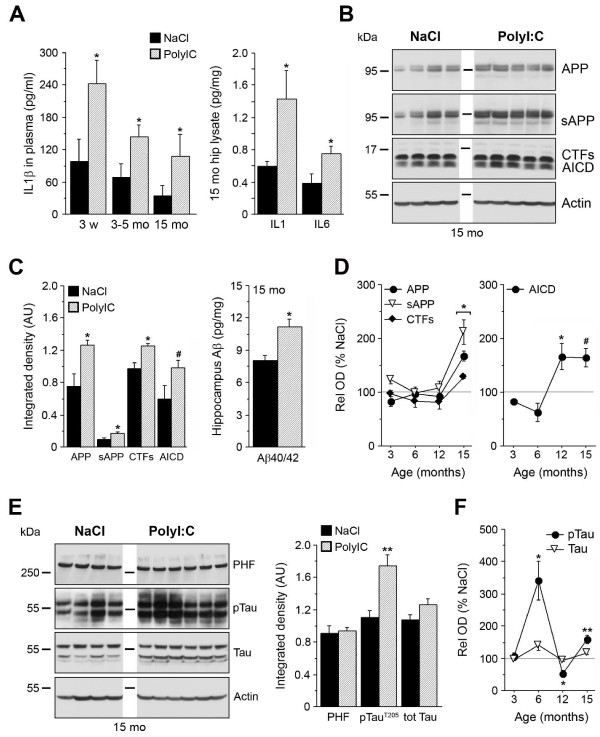Figure 1.
Prenatal immune challenge results in long-term alterations in interleukin (IL)-1β levels, amyloid precursor protein (APP) processing, and Tau phosphorylation. (A) After prenatal exposure to polyriboinosinic-polyribocytidilic acid (PolyI:C), elevation of the proinflammatory cytokines IL-1β in plasma and brain and IL-6 in brain was observed. (B,C) Quantification of APP and its proteolytic fragments in hippocampal lysates of 15 month-old mice. Western blots (WB, left) and ELISA (right) using anti-N- and C-terminal APP, and Aβ1–40/1–42 specific antibodies, respectively. WB values represent mean relative optical density normalized to β-actin and expressed in arbitrary units (AU). Lanes represent different animals, and the inset highlights the size markers. (D) Overview of longitudinal APP-related biochemical changes (percentage changes relative to saline (NaCl) occurring after prenatal viral-like infection. (E-F) WB, quantification (15 month-old mice), and longitudinal changes in Tau phosphorylation in mice prenatally exposed to NaCl or PolyI:C, assessed using anti-paired helical filaments (PHFs), anti-pTauT205, and anti-total Tau antibodies. Values represent mean ± SEM, n = 4 to 7 mice per treatment and age. **P < 0.01, *P < 0.05, #P = 0.08 statistics based on (A, C, E) Mann–Whitney U-test or (D, F) ANOVA/Fisher LSD test.

